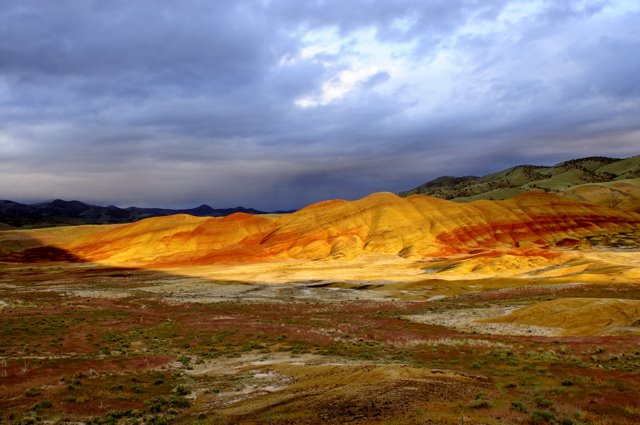How to use your camera includes how to use your camera on a tripod. Most new tripods have a base plate that attaches to the bottom of your camera. That's what that little ¼ inch screw hole is for. In some instances you will attach the camera directly to the tripod head. I like the base plate idea since I can remove the camera from the tripod and put it back as needed. I just leave the base plate attached to my camera most of the time.
The first thing you should do is learn to take a self portrait while using your tripod to hold the camera. Decide where you want to be and what background you want. Then point the camera at the area where you will be. Turn on the auto timer, activate the shutter, and then go pose in front of the camera. When you check your image you will know what adjustments to make to your position or the position of the camera and tripod. Take shots with the camera in landscape position then tilt the camera on it's side and shoot portrait images. Experiment with close-ups and wide angle shots until you get several images in each position that you like.
Now find a subject on the ground or floor to take shots of. This could be a flower, bug, mushroom, pet cat or dog, whatever interests you at the time. It should be something that won't move very much. With your camera on the tripod, lower everything until the camera is as close as it can be to your subject and still focus. If your camera has a Macro setting, turn it on as it will help you get as close as the camera can get. Shoot several images from above, to the side, from the back and any other angle you can think of. Just keep moving the tripod around and framing your shots then take the pictures you have created.
Did you ever see those sports photographers with cameras that have long sticks under the camera or the lens? The stick is called a “Monopod.” Most are adjustable so that you can adjust the length, and some have the same kind of heads that will hold removable base plates like tripods do. Some folks like monopods because of their small size and weight. Personally, I avoid them. I can do anything a monopod can do with a tripod by simply extending only one leg. But I still have the option of using the tripod when I want as well.
To use your tripod as a monopod, close the legs up together. It doesn't matter if you have one or all of them extended. Just be sure to fully extend at least one of them. The tripod should be about as tall or a little taller than you are with the camera attached. When you use a monopod, you are still creating a tripod, it's just that two of the legs are the ones you are standing on. Put the tripod out in front of you so you are slightly leaning into it to make it as steady as possible. This is why it needs to be longer than a walking stick.
Practice taking shots of moving subjects such as kids at games, running animals, cars on the street, and so on until you feel comfortable with the process, then open the legs and take some landscapes using the tripod. Again put your camera in both landscape and portrait positions and shoot until you are comfortable with all the features of the tripod you are using.
I hope you found this article interesting and useful. I know that a tripod will improve your photography a great deal. Most Pro's will buy a better tripod before they will buy a new camera or lens. It's that important to them.
Please send comments if this article was helpful to you or if you would like information about other topics.
If you are looking for books about how to use your camera click this Book Store link to see what is available. Need a Camera? This Camera Store has the the best choices available on the internet.
You can also visit my own photography website at Dwains Picks to see some of my work.
Thanks for visiting and I hope you will check this site often.
